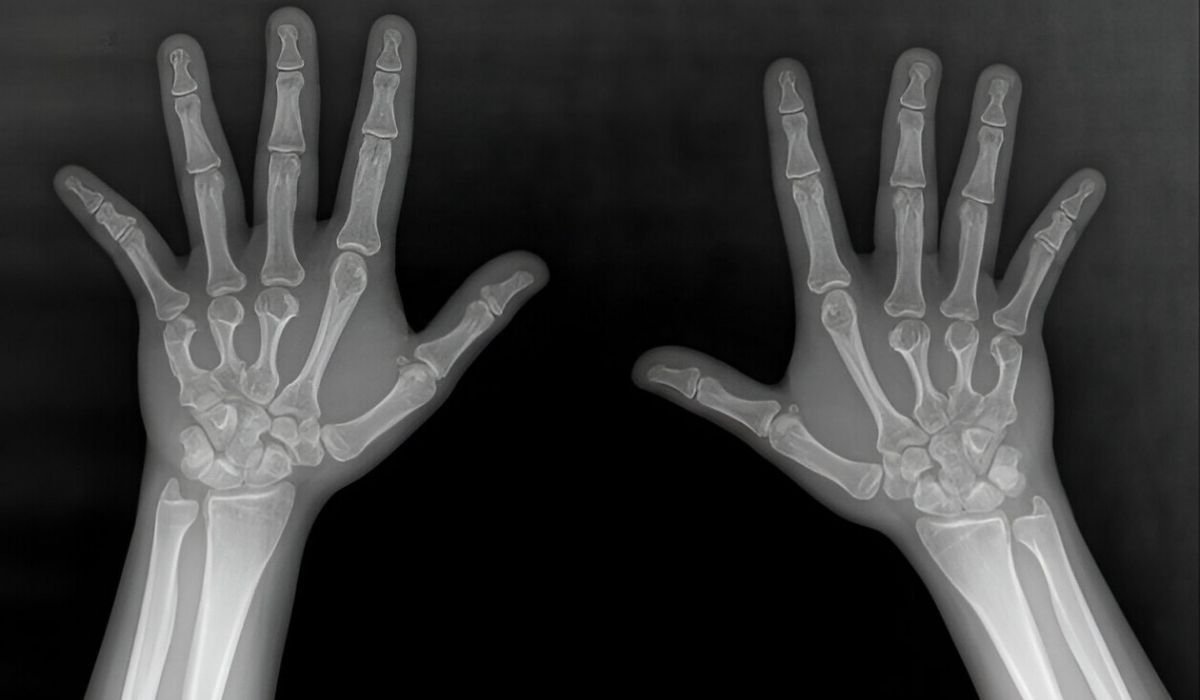
Cryptomicrotia Brachydactyly might sound like a mouthful, but it's a fascinating topic worth understanding. This rare genetic condition affects the development of ears and fingers, leading to smaller-than-normal ears (microtia) and shorter fingers (brachydactyly). Microtia can range from slightly smaller ears to almost no external ear structure, while brachydactyly results in unusually short fingers due to shortened bones. These conditions can occur separately or together, often due to genetic mutations. While it might seem daunting, many individuals with this condition lead full, active lives. Understanding the basics of Cryptomicrotia Brachydactyly can help demystify it and foster empathy for those affected. Ready to learn more? Let's dive into 25 intriguing facts about this unique condition!
Key Takeaways:
- Cryptomicrotia Brachydactyly is a rare genetic condition causing underdeveloped ears and short fingers. It can lead to hearing loss and physical limitations, but treatments like surgery and therapy can help manage the symptoms.
- Joining support groups, using adaptive devices, and seeking counseling can help individuals with Cryptomicrotia Brachydactyly lead fulfilling lives despite the challenges. Raising awareness and advocating for better resources is also important.
What is Cryptomicrotia Brachydactyly?
Cryptomicrotia Brachydactyly is a rare genetic condition that affects the development of the ears and fingers. It combines two distinct anomalies: cryptomicrotia, where the ears are underdeveloped or hidden, and brachydactyly, characterized by unusually short fingers. Here are some intriguing facts about this condition.
-
Cryptomicrotia Brachydactyly is a combination of two separate conditions: cryptomicrotia (underdeveloped ears) and brachydactyly (short fingers).
-
Genetic Mutation: This condition is caused by mutations in specific genes, often inherited from parents.
-
Rare Occurrence: It is extremely rare, with only a handful of documented cases worldwide.
-
Physical Appearance: Individuals with this condition typically have small or hidden ears and short fingers.
-
Hearing Impairment: Many affected individuals experience hearing loss due to the underdeveloped ears.
Genetic Basis of Cryptomicrotia Brachydactyly
Understanding the genetic basis of this condition can help in diagnosing and managing it. Here are some key genetic facts.
-
Gene Involvement: Mutations in the HOXA2 gene are often implicated in cryptomicrotia brachydactyly.
-
Autosomal Dominant: The condition is usually inherited in an autosomal dominant pattern, meaning only one copy of the mutated gene is needed to cause the disorder.
-
Genetic Testing: Genetic testing can confirm the diagnosis by identifying mutations in the relevant genes.
-
Family History: A family history of similar conditions can increase the likelihood of having cryptomicrotia brachydactyly.
-
Spontaneous Mutations: In some cases, the condition may arise from new mutations, with no family history.
Symptoms and Diagnosis
Recognizing the symptoms and diagnosing the condition early can improve management and outcomes. Here are some important facts about symptoms and diagnosis.
-
Ear Anomalies: The most noticeable symptom is the underdevelopment or absence of external ears.
-
Short Fingers: Affected individuals have unusually short fingers, often with missing or fused bones.
-
Hearing Tests: Audiometric tests are essential to assess the extent of hearing loss.
-
X-rays: X-rays of the hands can reveal the bone structure and confirm brachydactyly.
-
Physical Examination: A thorough physical examination by a specialist can help in diagnosing the condition.
Treatment and Management
While there is no cure for cryptomicrotia brachydactyly, various treatments can help manage the symptoms. Here are some treatment options.
-
Hearing Aids: Hearing aids can improve hearing for those with hearing loss.
-
Reconstructive Surgery: Surgery can help reconstruct the external ears to improve appearance and function.
-
Occupational Therapy: Therapy can help individuals adapt to the physical limitations caused by short fingers.
-
Speech Therapy: For those with hearing loss, speech therapy can aid in developing communication skills.
-
Regular Monitoring: Regular check-ups with specialists are crucial to monitor and manage the condition.
Living with Cryptomicrotia Brachydactyly
Living with this condition can be challenging, but with the right support, individuals can lead fulfilling lives. Here are some facts about living with cryptomicrotia brachydactyly.
-
Support Groups: Joining support groups can provide emotional and practical support for affected individuals and their families.
-
Educational Support: Special educational support may be needed for children with hearing loss.
-
Adaptive Devices: Various adaptive devices can help individuals perform daily tasks more easily.
-
Psychological Support: Counseling can help individuals cope with the emotional impact of the condition.
-
Awareness and Advocacy: Raising awareness about the condition can help in advocating for better resources and support.
Final Thoughts on Cryptomicrotia Brachydactyly
Cryptomicrotia Brachydactyly, a rare genetic condition, affects both ears and fingers. Understanding its complexities helps in recognizing the importance of genetic research and early diagnosis. This condition, though uncommon, highlights the marvels and mysteries of human genetics. By spreading awareness, we can foster a supportive environment for those affected. Knowledge empowers families and healthcare providers to make informed decisions. While challenges exist, advancements in medical science offer hope. Genetic counseling and supportive therapies play crucial roles in managing symptoms. Remember, every piece of information brings us closer to better care and understanding. Cryptomicrotia Brachydactyly, though rare, teaches us about resilience and the incredible diversity of human biology. Stay curious, stay informed, and continue to support those navigating this unique journey.
Frequently Asked Questions
Was this page helpful?
Our commitment to delivering trustworthy and engaging content is at the heart of what we do. Each fact on our site is contributed by real users like you, bringing a wealth of diverse insights and information. To ensure the highest standards of accuracy and reliability, our dedicated editors meticulously review each submission. This process guarantees that the facts we share are not only fascinating but also credible. Trust in our commitment to quality and authenticity as you explore and learn with us.
